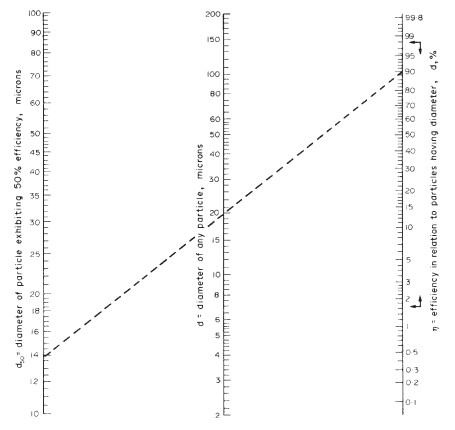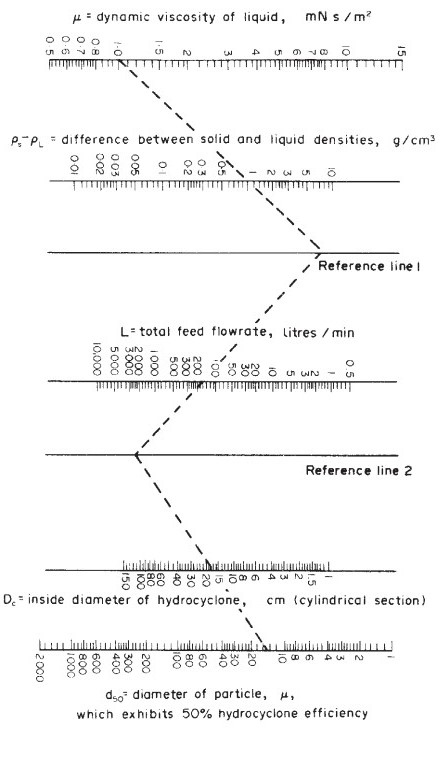Difference between revisions of "Cyclone"
Agus.nuryadi (talk | contribs) (→basic calculation cyclone) |
Agus.nuryadi (talk | contribs) |
||
| Line 10: | Line 10: | ||
'''Dc''' = diameter of the cyclone chamber, '''cm,''' | '''Dc''' = diameter of the cyclone chamber, '''cm,''' | ||
| + | |||
| + | ''u'' = liquid viscosity, centipoise (mN s/m2), | ||
| + | |||
| + | '''L''' = feed flow rate, l/min, | ||
| + | |||
| + | ''p''D = density of the liquid, g/cm3, | ||
| + | |||
| + | ''p''s = density of the solid, g/cm3. | ||
| + | |||
| + | |||
[[File:rumusB.jpg|5000px|thumb|centre|alt text]] | [[File:rumusB.jpg|5000px|thumb|centre|alt text]] | ||
Revision as of 17:41, 25 November 2020
basic calculation cyclone
The nomographs by Zanker can be used to make a preliminary estimate of the size of cyclone needed. The specialist manufacturers of hydrocyclone equipment should be consulted to determine the best arrangements and design for a particular application. Zanker’s method is outlined below and illustrated in the Example below and based on an empirical equation by Bradley (1960):
Where:
d50 = the particle diameter for which the cyclone is 50 per cent efficient, Micron
Dc = diameter of the cyclone chamber, cm,
u = liquid viscosity, centipoise (mN s/m2),
L = feed flow rate, l/min,
pD = density of the liquid, g/cm3,
ps = density of the solid, g/cm3.
Determination of d50 from the desired particle separation
furthermore, we can see the different variable that determines cyclone such as viscosity, density, flow rate, diameter inside the cyclone.


